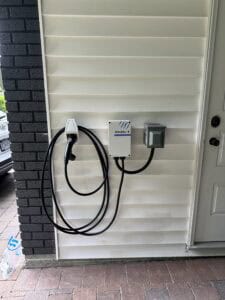Distinguishing Between Level 2 vs Level 3 Chargers
While EV ownership delivers greater sustainability and cost-efficiency for drivers, there is still a bit of a learning curve that new owners must navigate. For instance, charging an electric vehicle can be as simple as plugging right in—but drivers must understand different types of chargers. For example, knowing the difference between Level 2 vs Level 3 chargers is very important.
At TCA Electric, we’ve been leading the charge in Canada’s EV revolution for years. As part of that, we’ve been working to educate customers on how to get more from their EVs, providing information on various charging brands, types, and more. In today’s post, we’re taking a look at level 2 vs level 3 chargers—and sharing how one charging standard aims to make things a lot less complicated.
Level 2 vs Level 3 Chargers: Key Differences
Level 2 and Level 3 chargers are both devices that drivers may encounter for recharging the electric vehicles. But while these devices perform the same function, they also are quite different in a number of ways.
In the simplest terms, Level 3 chargers provide more power and charge faster than Level 2 chargers. In fact, Level 3 chargers are sometimes referred to as “fast charging stations,” “superchargers,” and a variety of other names that indicate their greater speed.
Why Are Level 3 Chargers Faster?
The reason why Level 3 chargers are able to provide a faster charge is because they provide a different form of current. Level 2 chargers use alternating current, or AC, while Level 3 uses direct current, or DC.
However, this is also an oversimplification. Electric vehicle batteries all use direct current to charge, and direct current must be converted from alternating current. What makes Level 3 chargers faster is that they convert from AC to DC before providing power to the vehicle, while vehicles that receive power from Level 2 (or Level 1) chargers use a smaller onboard converter to send DC power to the car’s battery.

Do EVs Use Level 2 or Level 3 Chargers?
If you’re wondering whether electric vehicles use Level 2 or Level 3, the answer is “yes.” EVs typically may use both Level 2 and Level 3 chargers, though in some cases an adapter or converter may be necessary to match up the connector to the socket on the electric vehicle.
Some specific models of electric vehicles may not be compatible with Level 3 charging. However, these cases are rare, and virtually all modern electric vehicles will be compatible with both types of charging.
Level 2 vs Level 3 Chargers and the Combined Charging System
While your electric vehicle may be compatible with both Level 2 and Level 3 chargers, you may be wondering how to set up your vehicle depending on the type of charger you’ll be using. After all, plugs for Level 2 and Level 3 chargers are different.
Luckily, standard systems have emerged that are making charging an electric vehicle easier than ever. The Combined Charging System (CCS) is one such example. Vehicles manufactured with a CCS port are compatible with both Level 2 and Level 3 chargers without any need for an adapter. This is because the top half will accept a Level 2 charger, while a Level 3 charger will use the entire port—top and bottom.

Similarly, Tesla’s charging system, the North American Charging Standard (NACS), is also a dual connector that is compatible with both types of chargers. While these two types of dual connectors are competing to be the industry standard, the end result is that most EV drivers will get a more streamlined experience whether they’re using a Level 2 or Level 3 charger.
Install an At-Home Charger and Avoid the Headaches
Of course, for EV owners looking to truly break free from the gas pump—or the third-party charger—at-home charging is the most convenient route. Installing a home EV charger enables drivers to recharge in the convenience of their own garage or driveway.
If you’re looking to join the EV revolution, TCA Electric’s EV charging pros can help! Reach out to our team today to get a quote.



